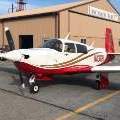-
Posts
5,053 -
Joined
-
Last visited
-
Days Won
69

201er replied to bd32322's topic in Modern Mooney Discussion

201er replied to bd32322's topic in Modern Mooney Discussion

201er replied to bd32322's topic in Modern Mooney Discussion

201er replied to bd32322's topic in Modern Mooney Discussion

201er replied to bd32322's topic in Modern Mooney Discussion

201er replied to bd32322's topic in Modern Mooney Discussion
We have placed cookies on your device to help make this website better. You can adjust your cookie settings, otherwise we'll assume you're okay to continue.